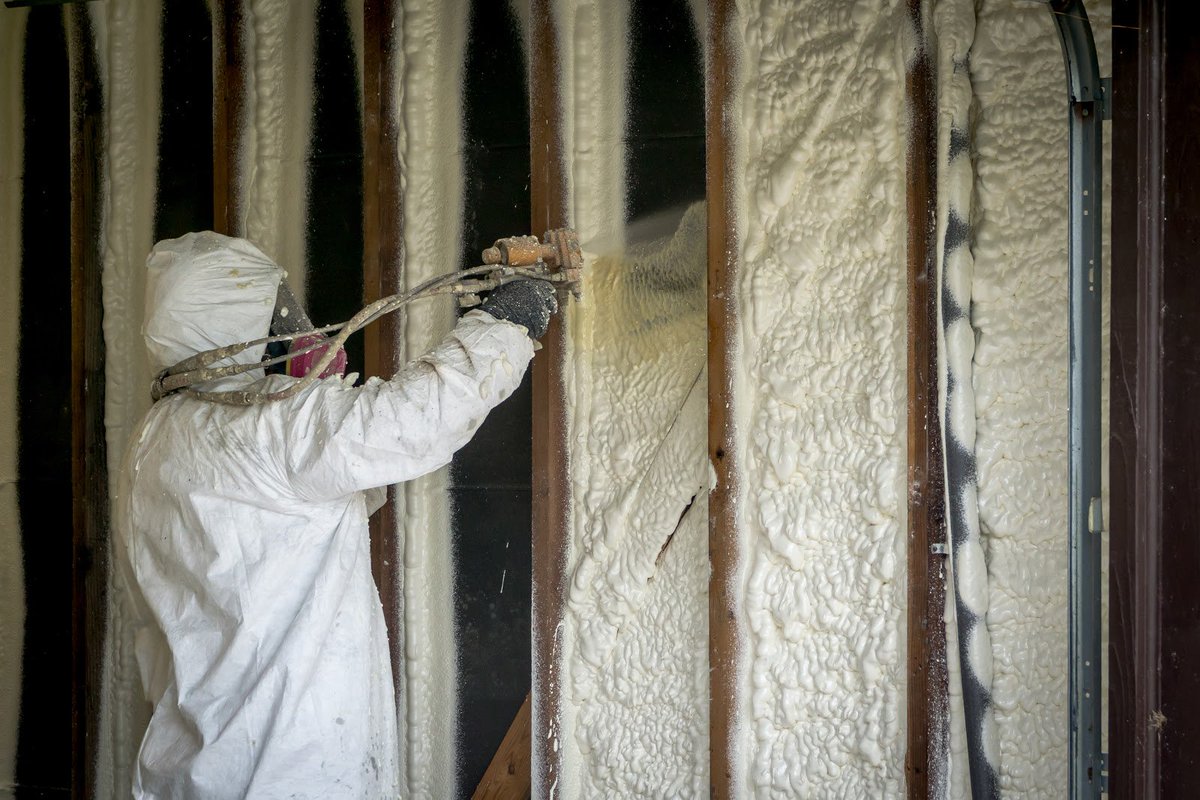
02 Nov Advantages of Spray Foam Insulation
To understand the advantages of spray foam insulation, it’s first important to know exactly what it is that insulation is accomplishing. We’ll keep it brief, then we’ll get into why spray foam is one of the most exciting insulation technologies today.
What does insulation do? In short, it helps regulate the temperature in a given building. Insulation helps prevent heat transfer – that means in the summer, it keeps buildings cooler, and in the winter, it keeps your building warmer! The most basic form of insulation is your building envelope – your roof, your walls, your doors and windows. Most of the time, when people talk about insulation, they’re talking about ways you can limit the heat transfer between your building envelope and the outside world.
Okay, now that the introduction is over with, it’s time to talk about the advantages of spray foam insulation. We’ll start with the most important advantage – and the thing that gives spray foam insulation its name.
Traditionally, insulation has come in batts. Basically, batts are big blocks of material (usually fiberglass) that can be slid into the framing of your building. One of the biggest problems with batts is that they are more or less rigid – they come in certain standard sizes, and that makes it difficult to fit them into oddly cut corners, areas with wiring, or other difficult spots.
Spray foam, true to its name, is a foam that installers can spray into even the strangest corners. When the spray touches a surface, it almost immediately begins to expand, filling every nook and cranny.
That gives spray foam insulation two distinct advantages over batt insulation. First, you can put it anywhere, so you won’t have any uninsulated areas in your framing. Second, because it expands, it will fill even the tiniest gaps. Gaps are a huge problem when it comes to building envelopes because heat transfer will simply occur in under-insulated areas, which reduces the effectiveness of all of your insulation. In other words, spray foam insulation can be used in more areas and does a better job insulating those areas.
There are two different kinds of spray foam insulation: closed-cell and open-cell. Each of these comes with its own distinct advantages, which leads us to yet another advantage of spray foam insulation – there’s a type for everyone’s needs.
Let’s elaborate on that point. Open-cell insulation is the less expensive of the two. When open-cell foam expands, it expands a lot – that means your installer will have to apply less in order to fully insulate your home. The disadvantage of open-cell is that it has a lower R-value than its closed-cell cousin. R-values (measured as R-value per inch) reflect how good an insulator is at preventing heat transfer. The R-value of open-cell insulation is about 3 per inch, around the same as fiberglass batts.
Closed-cell insulation expands less because it’s much denser. Consequently, it has an R-value of about 6 or 7 per inch, making it ideal for homes in harsher climates. Which one should you choose? It all depends on how harsh the weather is in your area!
Spray foam is also water impermeable. Understanding this advantage means understanding vapor barriers, but here’s the gist of it: when things get wet in your home, they’re more prone to rot and malfunction. Spray foam helps reduce that risk, and can even stand up to flooding (for those of you using it in the basement).
The stuff is also incredibly long-lasting. Getting insulation is an investment, and it’s an investment that pays off more the longer you stay in the same building and the longer you can go without replacing it. Spray foam lasts for decades, so when you get it installed, you’ll almost certainly never need to insulate again.
That brings us to the final advantage of spray foam insulation (for today – there are a lot of advantages). It saves you money. While the initial installation cost can be more than batt insulation, it does its job so much more effectively, you’ll need to spend far less on heating and cooling each year.
Now, of course, there are some considerations before you install spray foam insulation. You’ll need to inspect your roof and walls for any holes or cracks that need to be patched in order to see the most benefit from the insulation. Spray foam is excellent in residential buildings, but it may be especially good for commercial roofs and buildings, in part because businesses tend to spend more on heating and cooling in order to maintain customer comfort.


Sorry, the comment form is closed at this time.